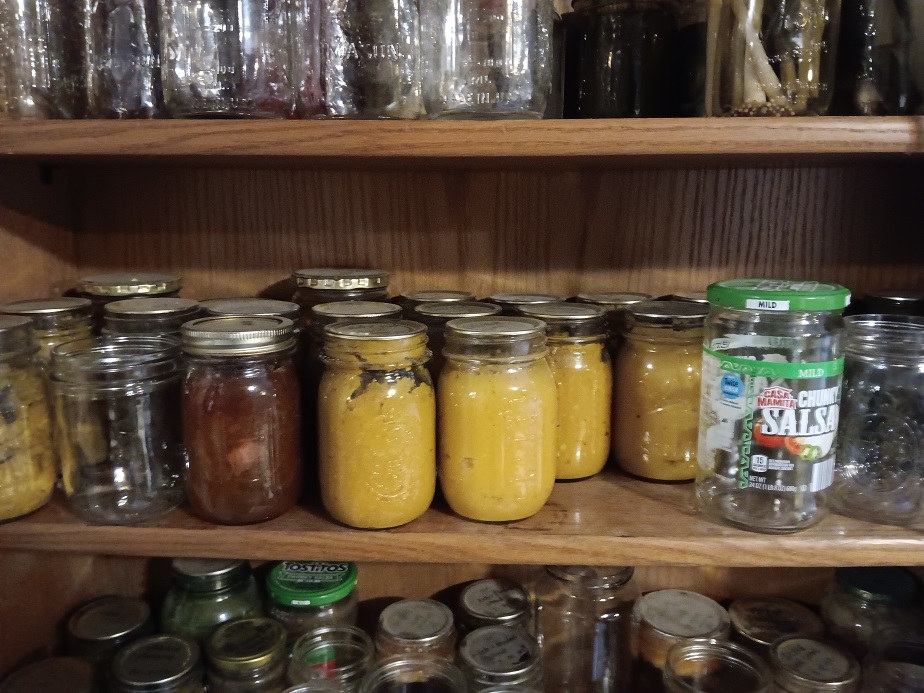Storing up bulk amounts of food is as practical and as natural as a bird flying. It’s in nature all around us, and it’s been a staple to preserve life for most of human history. It wasn’t until the rise of modern supermarkets that most families stopped keeping excess food storage in the home.
There’s nothing hard or tricky about storing food. It’s simple and easy, and it’s often a lot of fun. Here are six different ways to preserve food for easy storage in your home.
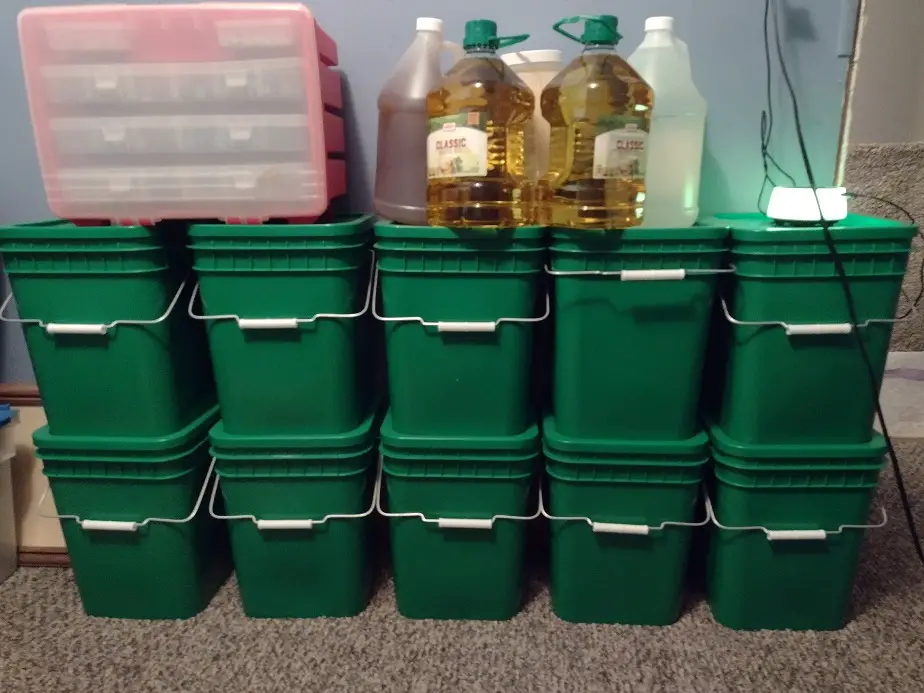
Dehydrating
Dehydrating is simply drying food with hot or warm air. It’s a reliable preservation technique that can be used on any food item as long as you fully dry things. It’s likely the first food preservation technique ever used. Dehydrating can be done with any heat source, but it;s most common with either just the sun or an electric dehydrator.
I have attempted sun-drying and it didn’t go all that well. It’s more suited for warmer, dryer regions than the Great Lakes area. What did work well for us is a small electric dehydrator that my wife got from her sister. It’s about fifteen inches wide, and has stackable drying shelves inside it. Electric dehydrators don’t get quite hot enough to cook food, but it will dry things quickly.
They are fairly inexpensive tio buy as a basic model, and that’s all you need. Mine uses around .50 cents to $1.00 in electricity to dehydrate a full load. It has a very small electric fan, which reduces the drying time considerably compared to the old, fanless model my mother had.
Common dehydrators make small batches of dry food within about a day. They are not good for preserving a lot of food for a large family and do require electricity. Dehydrated food can be stored without refrigeration, but it will have an altered flavor and texture. I dehydrate a lot of meat. It’s decent if used in a soup and allowed to simmer until soft. But, it’s still different.
It only takes a few minutes to prepare food and load the dehydrator, so they are very simple and take little of your precious time. I do recomend dehydrating, but perhaps not as the primary preservation method for your household.
More helpful information:
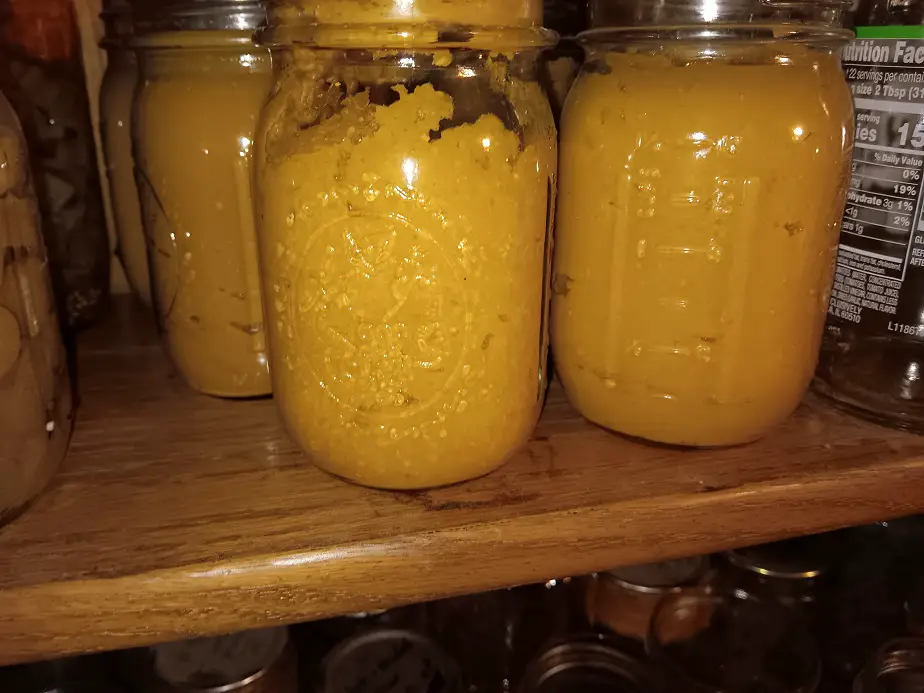
Canning
Home canning is the most common preservation technique used in the world today. Any type of foods can be preserved through caning. There are nuances to canning certain types of food, but it’s simple and easy to remember. Most canning is done with reusable glass jars and a sealing lid. Canning uses heat to pasteurize and vacuum-seal the contents of a jar.
When canning, you need to know the few technical nuances to do it properly. Preserving wet foods poses more risks than preserving through dehydration because bacteria and fungus can now grow on it if it’s not treated properly or pasteurized enough. My wife and I can as our primary food preservation method. Canned foods are fresh and ready-to-eat after heating.
Canning can be done in small or large batches and takes a maximum of a few hours to complete the process. It’s the most time-consuming preservation method, but most of the processing time is just boiling water. It’s not exactly a tough task. We usually have a full batch going while doing other chores around the home.
Canning can preserve a lot of food in one day. It keeps the food in a ready-to-eat state, and almost any food can be canned easily and safely. Canned food can be stored for up to three years at room temperature without getting overly funky.
More about home canning:
- The 3 Things You Need to Start Home Canning
- Best Pressure Canners for Beginners (and tips for getting started)
- 7 Water Bath Canning Tips for Beginners
- Can I Use a Pressure Cooker for Canning?
Freezing
Freezing is the simplest method of preserving food for several months. A large freezer is fairly inexpensive to purchase and operate and will hold between fifteen and thirty pounds of food per cubic foot of freezer space. They are reliable as long as you maintain electricity and are a compact way to store non-dried foods.
There is no prep work needed to freeze things other than put in a bag or container and place it in the unit. We freeze a lot of food, particularly meat because it’s very easy. When I butcher an animal, we need to chill the meat as quickly as possible so I tend to use the freezer for our fresh meats.
But, if I fill a freezer too deep with meat that hasn’t been pre-chilled, the middle of the pile may take too long to get cold and that risks some spoilage. It has happened. That’s one reason why I like small livestock like our Pot Bellied Pigs. One or two freshly butchered will chill and freeze just fine in my chest freezer.
I have a 7 cubic foot chest freezer. The same one costs around $200 right now and it uses between $2 and $5 a month in electricity depending on the season and how often it gets opened.
I will say, one single power-outage can completely destroy your entire stock of frozen food. If you are relying on a freezer, please do consider a small generator with enough power to run the freezer. We have lost everything once from a power outage. Fortunately, there wasn’t much in there at the time.
Freeze Drying
Home freeze-drying uses an appliance with a heater, a flash freezer, and a vacuum to preserve food into a shelf-stale form. It retains a better flavor and nutritional profile than most other preservation methods, and the texture is normally better too. Freeze dryers are expensive and somewhat heavy, but they take little of your time and are incredibly simple to operate.
The downside of a freeze dryer is cost. The machine is often stound $3,000 and they normally consume roughly $2 a day worth of electricity. You can process four to six pounds of food in one batch and it takes between 1 and 3 days, depending on the food type.
I don’t have a freeze dryer. Neither my wife nor I really want one. But, they are popular. I know five people with them, including my mother. They do produce a better finished product than dehydrating and it’s better suited to true, long-term food storage. Freeze dried food is completely dehydrated and is shelf-stable without special packaging.
Personally, we just don’t want another appliance in the house. We have enough already, But, it’s a great option if you fancy it.
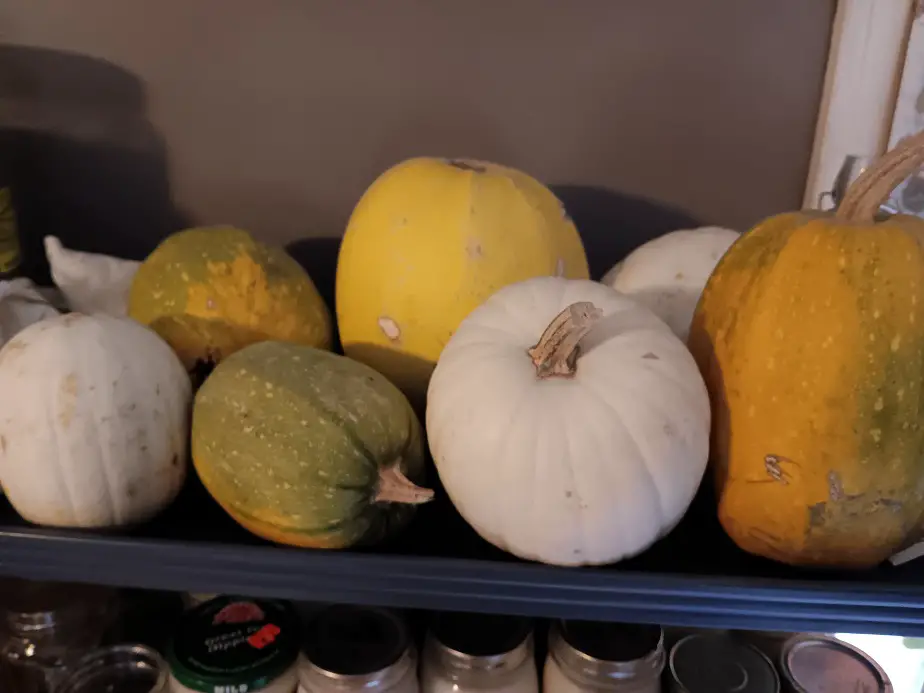
Cold-Room Storage
Cold-room storage can range from a walk-in refrigerator to a root cellar. The principle is to maintain a cool atmosphere to retard decay, and to keep a somewhat humid environment to prevent produce from drying out too much. Even a basement can work for cold-room storage. It’s both a storage and preservation method for whole, raw produce like potatoes, cabbage, and squash.
I have stored a lot of produce this way. Even a refrigerator is just a small cold-room. I have a spare refrigerator in my shed for storing fresh produce for the farmer’s market. We have stored cabbage in there end-of-season for nearly six months for our own use. That’s exactly how commercial growers can sell certain produce to grocery stores in the middle of winter.
I have used my shed as a makeshift cold-room in the fall and early winter. Root crops like carrots, rutabaga, onions, potatoes, and turnips all do well like that. Winter squashed (storage variety squash) last many months that way too. If I had a basement, I’d use it instead. An unheated basement is perfect for year-round cold, or at least cool, room storage.
It’s a great way to keep storable produce fresh in top condition over the winter months, it’s easy, and it doesn’t necessarily require any special equipment. The downside of it is that you are limited to more of the storage-type produce. Fortunately, they are both cheap to buy and easy to grow.
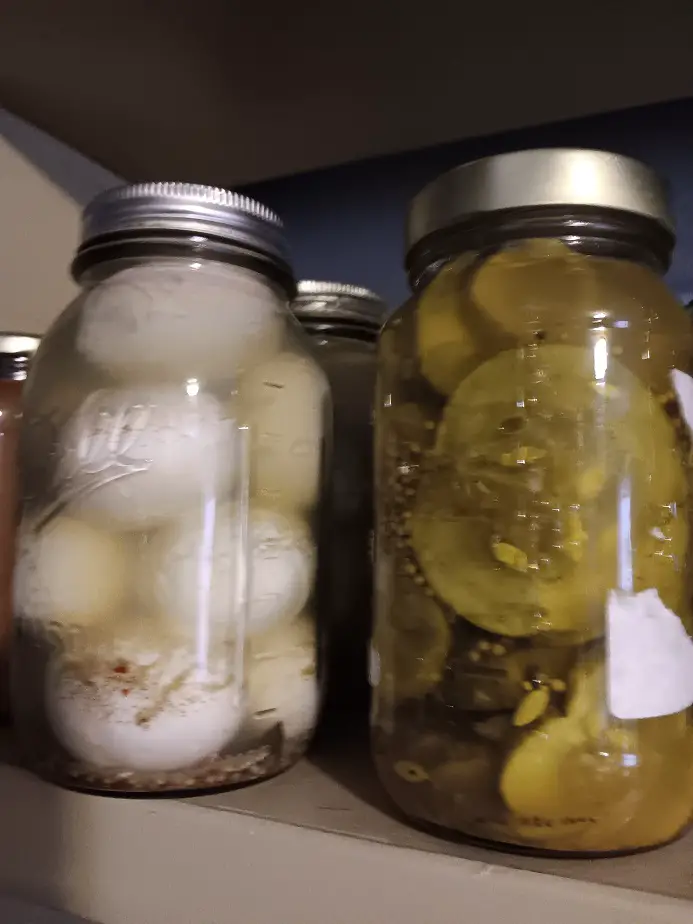
Pickling
Pickling is a chemical preservation method that can be used on any type of solid food. It is usually done by immersing food in a vinegar/water brine and letting it soak in. Meats, fruits, and vegetables of all types are pickled this way. There are a few simple points to consider for food-safety, but it’s a very basic process. Some pickling is done through fermentation, creating its own acidic solution.
Most pickling uses a simple 50: 50 ratio of vinegar to water. Any common vinegar works with that ratio as long as it says 5 percent acidity (that’s the industry standard). Most experts recomend putting all home-pickled foods in a refrigerator of pasturizing it through canning. I don’t often do either, depending on what I’m pickling. We’ll talk about that sometime.
I am a huge fan of pickled foods, especially meats, and eggs. My wife likes various pickled vegetables for adding to recipes. It really does give a nice flavor, especially if you use something other than a distilled vinegar. I like tha taste of pickled foods. You can add any spices you like to the brine. salt or sugar is often added to add an extra layer of preservation.
PIckling requires little to moderate kitchen work, and a lot of vinegar. Properly pickled foods are shelf-stable, and are ready-to-eat.
More about Pickling:
How to Choose the Right Food Preservation Method
You can choose your preferred preservation methods based on what you want to preserve, the equipment you are willing to invest in, and the amount of work involved in the process. Also, consider the cost of both equipment and operation and the usable form the food will be in.
If you use a freezer because it’s super easy and you can freeze literally anything and everything, just remember that whatever you want to use has to be thawed first. Canning takes something of a watchful eye and it requires keeping shelves full of jars. I personally think canning is the overall best in our home.
Consider how much time a process will take. None of these really take much of your time for how much food you are preserving. Do stay within your budget. That is the most important consideration by far. Look at the options within your expendable income os your ability to save money, and then go through the remaining choices and pick the one or ones that sound best to you.
If you have any questions, ask them in the comment section below. I’ll do my best to reply.
More about food storage:

